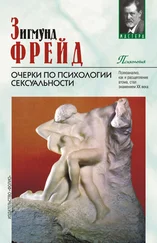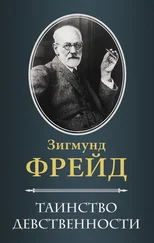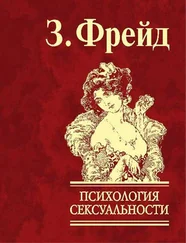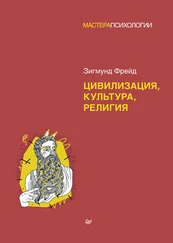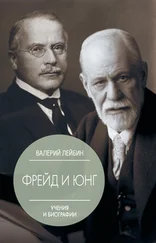Зигмунд Фрейд - Totem and Taboo
Здесь есть возможность читать онлайн «Зигмунд Фрейд - Totem and Taboo» весь текст электронной книги совершенно бесплатно (целиком полную версию без сокращений). В некоторых случаях можно слушать аудио, скачать через торрент в формате fb2 и присутствует краткое содержание. Год выпуска: 2014, Издательство: epubBooks Classics, Жанр: Психология, на английском языке. Описание произведения, (предисловие) а так же отзывы посетителей доступны на портале библиотеки ЛибКат.
- Название:Totem and Taboo
- Автор:
- Издательство:epubBooks Classics
- Жанр:
- Год:2014
- ISBN:нет данных
- Рейтинг книги:3 / 5. Голосов: 1
-
Избранное:Добавить в избранное
- Отзывы:
-
Ваша оценка:
- 60
- 1
- 2
- 3
- 4
- 5
Totem and Taboo: краткое содержание, описание и аннотация
Предлагаем к чтению аннотацию, описание, краткое содержание или предисловие (зависит от того, что написал сам автор книги «Totem and Taboo»). Если вы не нашли необходимую информацию о книге — напишите в комментариях, мы постараемся отыскать её.
Totem and Taboo — читать онлайн бесплатно полную книгу (весь текст) целиком
Ниже представлен текст книги, разбитый по страницам. Система сохранения места последней прочитанной страницы, позволяет с удобством читать онлайн бесплатно книгу «Totem and Taboo», без необходимости каждый раз заново искать на чём Вы остановились. Поставьте закладку, и сможете в любой момент перейти на страницу, на которой закончили чтение.
Интервал:
Закладка:
Among the Akamba (or Wakamba) in British East Africa, a law of avoidance is in force which one would have expected to encounter more frequently. A girl must carefully avoid her own father between the time of her puberty and her marriage. She hides herself if she meets him on the street and never attempts to sit down next to him, behaving in this way right up to her engagement. But after her marriage no further obstacle is put in the way of her social intercourse with her father [24] Frazer, l.c. , II, p. 424.
.
The most widespread and strictest avoidance, which is perhaps the most interesting one for civilized races is that which restricts the social relations between a man and his mother–in–law. It is quite general in Australia, but it is also in force among the Melanesian, Polynesian and Negro races of Africa as far as the traces of totemism and group relationship reach, and probably further still. Among some of these races similar prohibitions exist against the harmless social intercourse of a wife with her father–in–law, but these are by far not so constant or so serious. In a few cases both parents–in–law become objects of avoidance.
As we are less interested in the ethnographic dissemination than in the substance and the purpose of the mother–in–law avoidance, I will here also limit myself to a few examples.
On the Banks Island these prohibitions are very severe and painfully exact. A man will avoid the proximity of his mother–in–law as she avoids his. If they meet by chance on a path, the woman steps aside and turns her back until he is passed, or he does the same.
In Vanna Lava (Port Patterson) a man will not even walk behind his mother–in–law along the beach until the rising tide has washed away the trace of her footsteps. But they may talk to each other at a certain distance. It is quite out of the question that he should ever pronounce the name of his mother–in–law, or she his [25] Frazer, l.c. , II, p. 76.
.
On the Solomon Islands, beginning with his marriage, a man must neither see nor speak with his mother–in–law. If he meets her he acts as if he did not know her and runs away as fast as he can in order to hide himself [26] Frazer, l.c. , II, p. 113, according to C. Ribbe: Two Years among the Cannibals of the Solomon Islands , 1905.
.
Among the Zulu Kaffirs custom demands that a man should be ashamed of his mother–in–law and that he should do everything to avoid her company. He does not enter a hut in which she is, and when they meet he or she goes aside, she perhaps hiding behind a bush while he holds his shield before his face. If they cannot avoid each other and the woman has nothing with which to cover herself, she at least binds a bunch of grass around her head in order to satisfy the ceremonial requirements. Communication between them must either be made through a third person or else they may shout at each other at a considerable distance if they have some barrier between them as, for instance, the enclosure of a kraal. Neither may utter the other’s name [27] Frazer, l.c. , II, p. 385.
.
Among the Basogas, a negro tribe living in the region of the Nile sources, a man may talk to his mother–in–law only if she is in another room of the house and is not visible to him. Moreover, this race abominates incest to such an extent as not to let it go unpunished even among domestic animals [28] Frazer, l.c. , II, p. 461.
.
Whereas all observers have interpreted the purpose and meaning of the avoidances between near relatives as protective measures against incest, different interpretations have been given for those prohibitions which concern the relationship with the mother–in–law. It was quite incomprehensible why all these races should manifest such great fear of temptation on the part of the man for an elderly woman, old enough to be his mother [29] v. Crawley: The Mystic Rose (London, 1902), p. 405.
.
The same objection was also raised against the conception of Fison who called attention to the fact that certain marriage class systems show a gap in that they make marriage between a man and his mother–in–law theoretically not impossible and that a special guarantee was therefore necessary to guard against this possibility.
Sir J. Lubbock, in his book The Origin of Civilization , traces back the behaviour of the mother–in–law toward the son–in–law to the former ‘marriage by capture’. “As long as the capture of women actually took place, the indignation of the parents was probably serious enough. When nothing but symbols of this form of marriage survived, the indignation of the parents was also symbolized and this custom continued after its origin had been forgotten.” Crawley has found it easy to show how little this tentative explanation agrees with the details of actual observation.
E. B. Tylor thinks that the treatment of the son–in–law on the part of the mother–in–law is nothing more than a form of ‘cutting’ on the part of the woman’s family. The man counts as a stranger, and this continues until the first child is born. But even if no account is taken of cases in which this last condition does not remove the prohibition, this explanation is subject to the objection that it does not throw any light on the custom dealing with the relation between mother–in–law and son–in–law, thus overlooking the sexual factor, and that it does not take into account the almost sacred loathing which finds expression in the laws of avoidance [30] Crawley, l.c. , p. 407.
.
A Zulu woman who was asked about the basis for this prohibition showed great delicacy of feeling in her answer: “It is not right that he should see the breasts which nursed his wife.” [31] Crawley, l.c. , p. 401, according to Leslie: Among the Zulus and Amatongas , 1875.
It is known that also among civilized races the relation of son–in–law and mother–in–law belongs to one of the most difficult sides of family organization. Although laws of avoidance no longer exist in the society of the white races of Europe and America, much quarrelling and displeasure would often be avoided if they did exist and did not have to be re–established by individuals. Many a European will see an act of high wisdom in the laws of avoidance which savage races have established to preclude any understanding between two persons who have become so closely related. There is hardly any doubt that there is something in the psychological situation of mother–in–law and son–in–law which furthers hostilities between them and renders living together difficult. The fact that the witticisms of civilized races show such a preference for this very mother–in–law theme seems to me to point to the fact that the emotional relations between mother–in–law and son–in–law are controlled by components which stand in sharp contrast to each other. I mean that the relation is really ‘ambivalent’, that is, it is composed of conflicting feelings of tenderness and hostility.
A certain part of these feelings is evident. The mother–in–law is unwilling to give up the possession of her daughter; she distrusts the stranger to whom her daughter has been delivered, and shows a tendency to maintain the dominating position, to which she became accustomed at home. On the part of the man, there is the determination not to subject himself any longer to any foreign will, his jealousy of all persons who preceded him in the possession of his wife’s tenderness, and, last but not least, his aversion to being disturbed in his illusion of sexual over–valuation. As a rule such a disturbance emanates for the most part from his mother–in–law who reminds him of her daughter through so many common traits but who lacks all the charm of youth, such as beauty and that psychic spontaneity which makes his wife precious to him.
Читать дальшеИнтервал:
Закладка:
Похожие книги на «Totem and Taboo»
Представляем Вашему вниманию похожие книги на «Totem and Taboo» списком для выбора. Мы отобрали схожую по названию и смыслу литературу в надежде предоставить читателям больше вариантов отыскать новые, интересные, ещё непрочитанные произведения.
Обсуждение, отзывы о книге «Totem and Taboo» и просто собственные мнения читателей. Оставьте ваши комментарии, напишите, что Вы думаете о произведении, его смысле или главных героях. Укажите что конкретно понравилось, а что нет, и почему Вы так считаете.


